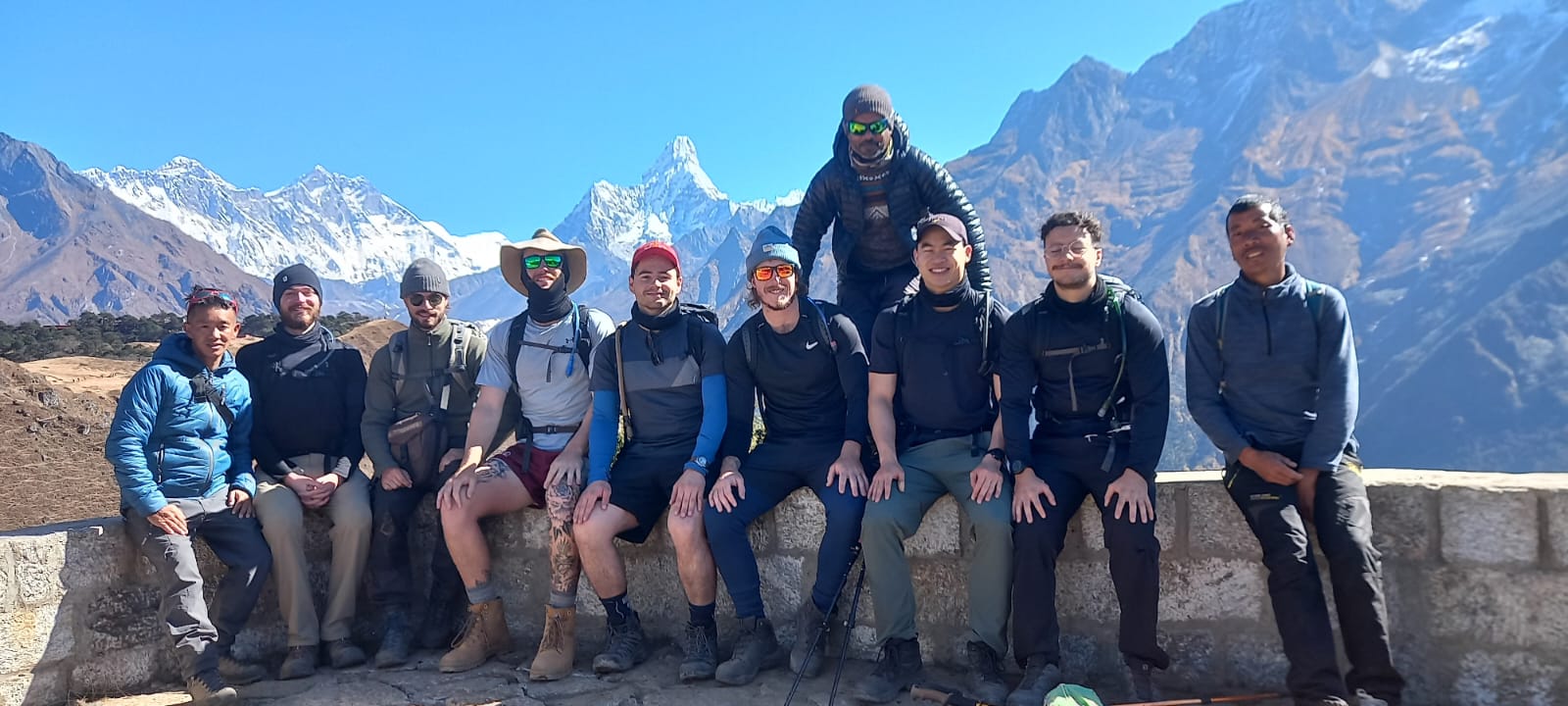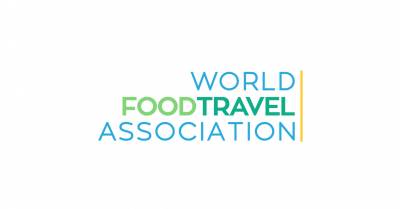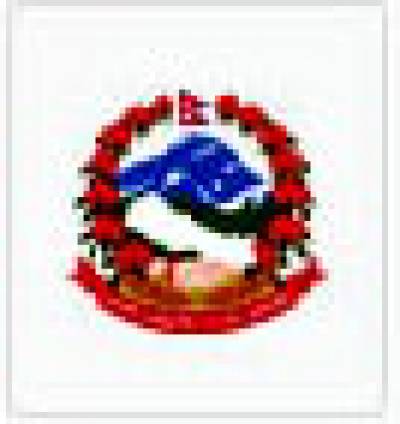EVEREST THREE HIGH PASS TREK 15 DAYS
This trek is a stunning adventure into the UNESCO World Heritage-listed Sagarmatha National Park region of Nepal. It is a physically tough 18-day trek crossing three high altitude passes - Renjo La Pass (5388 m), Cho La Pass (5380 m) and Kongma La Pass (5535 m); trekking through scenic valleys of Khumbu, Bhotekoshi, Gokyo, and Imja Tse; and incredible views. We will also climb to Mt. Gokyo Ri (5483m), Kala Pathar (5545m) and Chukung (5550m) before we arrive at Everest Base Camp – the launch-pad to the world’s highest peak Mt Everest (8848m).
We will visit the turquoise blue Gokyo Lakes (4,700–5,000m); Mt. Gokyo Ri (5357m); and visit the remote trading route between Nepal and Tibet - Nangpa La Pass. We will also visit the large Sherpa village of Marlung (4260m) and the Thame Tibetan Buddhist Monastery – the oldest in the Khumbu region, thought to have its origins in the 17th century. The monastery sits 200 meters above Thame Village on the side of Sumdur Mountain. Imagine yourself surrounded by snow-covered mountains, amidst alpine glaciers and a chance to see the elusive snow leopard, musk deer and red panda.
Lukla is the usual starting point, but if you have more time then you can start from Jiri, Lukla, Phaplu or Salleri. It is a challenging ascent to Dingboche (4410m), Kongma-La Pass (5535m) via Tengboche (3860 m) and Kongma La Pass (5550m). The views from these places are breathtaking. Kongma La Pass is the highest of the three passes. From Dingboche we ascend to higher elevations and after crossing Khongma La Pass via High Camp we reach Lobuche (4910 m) and then Gorakshep (5140m). Gorakshep is the intersection where the trail heads to Kala Patthar and Everest Base Camp. For the best views of Mt. Everest we trek up to the well-known vantage point at Kala Patthar (5644m) - also referred to as ‘black rock”. It is all downhill from here as we head back to Gorakshep and on to Everest Base Camp (5360m) via Gorak Shep (5164m) At EBC we can view the Khumbu Glacier, the world’s highest and one that climbers have to navigate through on their way to Mt. Everest.
From EBC we descend to Lobuche and then to Cho La Pass (5420m), the most difficult of the three passes - starting near Lobuche Kharka and going through to Thangnak. On the trek to Thangnak Kharka via Dzongla (4830m) we view Awi Peak (5245m), Lobuche Peak, Nirekha Peak and other mountains. We then head to Gokyo via the Gokyo Valley with its many lakes, and then ascend to Gokyo Ri (5420m) said to be the best viewpoint in the entire Himalayas. After leaving Gokyo Ri we head to High Camp via Renjo La Pass 5360m. As with Gokyo Ri, Renjo La Pass also provides incredible views of the Himalayan Ranges. After leaving High Camp we descend to Thame via Lungden (4380m) and Marlung (4210 m). Further down we come to Lukla, via Namche Bazaar, having completed the round-trip trek through the three high passes.
This is without doubt one of the best and more all-inclusive treks in the Everest region. This trek is suited to those who are physically fit and prepared to push themselves and reach these far-flung places and enjoy the challenge of crossing the three high altitude passes. The best time of year to do this trek is in autumn (Sept to November) and spring (March to May) when there is less snow that may make trekkin more difficult.
Sherpa Expedition And Trekking will attend to permits, food and accommodation on the trail.
ITINERARY
Day 1 : Fly from Kathmandu to Lukla (2850m) and trek to Phakding (2610m) Duration: 4-5 hours.
After breakfast in your hotel, we drive to the domestic terminal of Kathmandu Airport for the 35-minute flight to Lukla landing on a precarious strip of tarmac overlooking the Dudh Koshi River. Today we meet our porters and then have lunch at the Yeti Mountain Home Lodge and then begin with a relatively easy trek descending to Phakding. This trek takes us through farming lands of the Sherpas passing through several villages along the way. Nowadays, many Sherpas make their living solely from trekking. Along the trail we can stop at one of many tea houses for refreshments and a chat with the locals. We will also pass by many mani stones (a form of prayer) which are stones carved in Tibetan script, and of course, you will see many strings of prayer flags along the trail. We then arrive at our lodge on the banks of the Dudh Koshi River where we stay the night. Breakfast, lunch & dinner included.
Day 2 : Trek from Phakding to Namche Bazaar (3,440m) Duration: 5-6 hours.
Today the trail takes us through a beautifully scented pine forest along the banks of the Dudh Koshi River crossing several suspension bridges along the way. The most well known of these suspension bridges is the Hillary Suspension Bridge – named after Sir Edmund Hillary, the first man (along with Sherpa Tensing to climb Everest). Our trail gives us a view of Mt. Thamserku (6618 m) before passing through the small villages of Benkar, Chumoa & Monjo just prior to the entrance to Sagarmatha National Park. The final village we pass is Jorsale before ascending through forests and crossing several bridges until we reach the head of the Dudh Koshi and Bhote Koshi rivers. A steep climb of about 2 hours gives us our first glimpse of Mt. Everest just above the Lhotse-Nuptse ridge. Arriving at Chautara we can again reach for our cameras and take in the views. We continue on for about 1.5 hours to reach Namche Bazaar, well known as the gateway to Mt. Everest and the main trading hub of this region – the Bagmati Zone. Tonight we stay at Namche Bazaar. Breakfast, lunch & dinner included.
Day 3 : Rest day at Namche Bazaar for acclimatization.
In order to reach higher altitudes, we will spend two days acclimatizing. Health experts recommend we stay active and moving during the rest day. Today we can choose between taking a hike to Thame or visit Khunde, or alternatively relax and explore Namche Bazaar – the home to many Sherpas employed in the trekking business. Namche Bazaar is the main hub of the Everest (Khumbu) region with government offices, ATMs, Internet cafes, shops, restaurants, a bakery, and of course a colorful market each Friday evening and Saturday. If we decide to take a vertical trek during the day it will help us to properly acclimatize. Our guides take us to the Tourist Visitor Center near the headquarter of the Sagarmatha National Park where we can see a variety of artifacts related to the first Everest climbers, learn about the Sherpa culture and the numerous flora and fauna of the Everest region. Breakfast, lunch & dinner included.
Day 4 : Trek from Namche to Pangboche (3,930) Duration: 5-6 hours.
Today we head off to Tengboche and along the trail have our first views of several enormous peaks: Ama Dablam (6812m), Lhotse Shar (8393m), Taboche (6495m), Khangtega (6782m), and Thamserku (6623m). As we continue we come to an Army barrack at Phunke Tenga (22335m) and arrive at Tengboche where we stop for lunch. After lunch we visit the famous Tibetan Tengboche Buddhist monastery and later continue on the trail and pass the Sagarmatha National park office at Debouche. Continuing we finally reach Pangboche and visit the Gompa (temple). Tonight we stay here.
Day 5 : Trek from Pangboche to Chukhung (4,750m) Duration: 5-6 hours.
From Pangbohe, there is a short hike to Chhukung, the final settlement of the Khumbu region around Imja Tse (also known as Island Peak) with its magnificent panorama of snowcapped mountains with Mt. Makalu in the east. After arriving at Chhukung we can rest or hike to Chhukung Ri for more amazing views of the mountains. It will also allow us time to prepare for our early morning departure to Kongma-la Pass. Breakfast, lunch & dinner included.
Day 6 : Hike to Chhukung Ri (5,550m) and Back to Chhukung Valley 5-6 hours.
We tighten our shoelaces this very morning and march forward to conquer the summit of Chhukung Ri located at the elevation of 5,550m asl. The top of this peak rewards our days’ long physical and mental effort via mesmerizing glimpses of Ama Dablam and Amphu Labsa in close proximity. In addition, we can also gaze the 3600 views of surroundings with heavenly natural settings. We capture these marvellous moments in our minds and cameras then return back to Chhukung Valley.
Day 7 : Trek from Chukhung to Kongoma-la 5,535m and to Lobuche (4,928m) Duration 7-9 hours.
Our day begins before dawn trekking along an icy path and then a stony trail beneath Kongma-La Pass and its Kongma Peak– also known as Mehra Peak. We then cross Kongma-La Pass at (5,535m) nestled between Mt Nuptse Wall, Mihara, and Pokalde peaks. After a strenuous climb towards Khumbu Glacier and moraine (rocky ground), we take a fairly steep trail up to the base of the Khumbu Glacier to arrive at Lobuche for an overnight stop in the comfort of a warm and comfortable lodge. Breakfast, lunch & dinner included.
Day 8 : Trek from Lobuche to Gorak Shep (5170m) & Everest Base Camp (5364m) & return to Gorakshep Duration: 6-7 hours.
Embark on an exhilarating trek from Lobuche to Gorak Shep and Everest Base Camp, a journey that will test your stamina and reward you with breathtaking views. The trek covers a distance of approximately 15 kilometers, taking 6-7 hours. As you ascend through the rugged terrain, you'll be captivated by panoramic vistas of snow-capped peaks and the majestic Khumbu Icefall. Upon reaching Everest Base Camp (5364m), relish the sense of accomplishment amidst the towering giants of the Himalayas. After soaking in the stunning scenery, return to Gorak Shep for a well-deserved rest, reflecting on the day's awe-inspiring adventure.
Day 9 : Trek from Gorakshep to Kalapatther (5643m) & then to Dzongla (4830m) Duration 6-7 hours.
An early morning start takes us to Kalapatthar (known as black rock) a well known landmark that offers the most exhilarating panoramic view of surrounding giant peaks including a close-up of Mt. Everest. We then head back to Gorakshep and then onward to Dzongla, at the base of Cho-La Pass. at Dzongla where we stay the night. Breakfast, lunch & dinner included.
Day 10 : Trek from Dzongla to Cho-la pass (5367m) & down to Thangnak (4750m) Duration: 7-9 hours.
Rising early we then trek to Thangnak and get a magnificent view of Mt Cholatse (6440m). The trek heads in a westerly direction from Dzonglha. Today is the toughest day of our trek as we head to Cho-La Pass (5420m). On reaching the highest point of the valley we begin our trek through Cho La Pass taking in some amazing views of Chola Lake and Mt.Amadablam. The climbing can be quite difficult due to being rugged and with rocks glazed over with ice. Upon reaching the top of the pass we then haed downhill to Thangnak – a more relaxing descent! Breakfast, lunch & dinner included.
Day 11 : Trek from Thangnak to Gokyo (4,750m) and Hike to Gokyo Ri Duration: 5-6 hours.
An early morning start and then begin our trek to the small village of Gokyo at the base of Mt Gokyo. Along the trail we will have some fantastic mountain views. After leaving Longponga (4720m) we continue uphill on a trail that leads to Gokyo with a magnificent view of Tanjung Tsho Lake (4710m). After a short walk along the edge of the Ngozumpa Glacier (36 km is the longest glacier of Nepal). In the evening we can choose to climb Gokyo Ri, and get a panoramic vista of some of the world’s highest peaks, including Mt. Cho Oyo, Gyachung Kang, Mt. Everest, Mt. Lhotse, Cholatse, Taweche and Mt. Makalu in the east. This is truly one of the highlights of the trek! We then descend to Gokyo.
Day 12 : Trek from Gokyo to Renjo-La Pass (5360m) & descend to Marlung or Thame (4210m/3880m) Duration 7-9 hours.
Up before dawn, we head off to our final high pass following the trail at the end of Gokyo Lake where along the way we are again gifted with more awesome views of Mt. Everest, Lhotse, Cholatse and Taboche, before crossing Renjo La Pass. This is also one of the most demanding parts of our trek, but once we reach the top we will be rewarded with spectacular 360-degree views of Mt. Cho-Oyu and other towering peaks. After a short break, we continue our trek to the frozen lakes below Renjo La Pass before heading on a long trek downhill to the small village of Lungdeng – close to Nangpa-La Pass The trail then takes us to Marlung village where we stay for the night just above the Bhote Koshi River. Breakfast, lunch & dinner included.
Day 13 : Trek from Thame /Marlung to Monjo (2860m) via Namche Bazaar (3,440m) Duration: 5-6 hours.
Leaving Marlung we follow a gradually ascending trail until we reach Thame Village with its own hydropower generator. On the trail we pass several Khumbu villages, pine and rhododendron forests just prior to reaching Namche Bazaar. Our trek continues as we head back to Monjo near the Sagarmatha National Park where we stay the night. Breakfast, lunch & dinner.
Day 14 : Trek from Monjo to Lukla (2,860m) Duration: 6-7 hours.
In the morning we follow the trail to Phakding and then head back to Lukla.Tonight we celebrate our achievements and reminisce sharing the highlights and photos of this jam-packed mountain trek. Breakfast, lunch & dinner included.
Day 15 : Fly back to Kathmandu and transfer to respective hotels.
Today, in the morning, we fly back to Kathmandu after our epic mountain journey. After arriving in Kathmandu we can either rest or wander around Thamel doing some last-minute shopping.
SERVICES
Costs included in your package.
- Airport picks up and transports by private Car/Jeep.
- Three meals a day (Breakfast, lunch, and dinner) during the trek.
- Fresh fruit every evening after dinner.
- Trekking Lodge (Tea House) accommodation during the trek.
- All necessary paperwork including Sagarmatha National Park Entry Permit & Khumbu Pasang Lhamu Rural Municipality fees.
- Kathmandu-Lukla-Kathmandu flight with private airport transfer and domestic airport tax.
- A highly experienced, helpful, knowledgeable, friendly, English speaking well trained, Government license holder guide with all his salary, food, drinks, accommodation, transport and insurance.
- Strong, helpful Sherpa porters with proper safety equipment and walking equipment, his salary, food, accommodation, and insurance (one porter for two people).
- Comprehensive medical supplies (first aid kit will be available).
- Arrangement of emergency helicopter service (paid by your Travel Insurance Company).
- Use of sleeping bag, down jacket, duffel bag and walking poles (if you don’t have your own, to be returned after trip completed).
- Sherpa Expedition and Trekking T-shirt
- Government taxes and official expenses.
- Oxygen meter to check your pulse and oxygen saturation and heart rate twice daily (Very useful to check Altitude Mountain Sickness(AMS) symptoms) which will ensure your health during the trek.
- Assistant guide for groups of 8 or more people.
Costs Exclude
- Meals whilst you are in Kathmandu - lunch, and dinner.
- Hotel accommodation in Kathmandu
- Nepal entry visa fee (easy to obtain the visa on arrival at Tribhuvan International Airport – Kathmandu). $30 USD for 15-day, $50 USD for 30 Days, and $125 USD for 90 Days visa.
- Personal travel and medical insurance.
- International airfare.
- Your personal expenses.
- All the alcoholic and nonalcoholic, soup, tea, coffee, hot chocolate, cocoa, mineral water, extra food, cold and hot drinks on trek ( i.e. those you choose to purchase along the way and during evenings in the tea houses)
- All desserts & sweet things like chocolate, cake, pie, pudding.
- Hot shower and battery charging at the tea houses.
- Tips for the guide, porter, and driver (tipping is expected)
- Excess baggage of more than 10 kg for Lukla flight.
- NOTE: If you return earlier from the trek due to sickness or any problem, the money you paid for the flight, hotel, mountain room, food, etc. is nonrefundable, and you will need to bear the expenses for the hotel, food, etc. in Kathmandu yourself.
EQUIPMENTS
The following information will give you some idea about what you need to bring for the trek as the bag pack for the hiking in Nepal and the gear play a vital role for the successful trip and we suggest you to have all the necessary gear for the trip and not to have unnecessary equipment/things that you will not be using for the trip and list of the gear you need for the trek are:
General
- Seasonable Sleeping bag and down Jacket (If you need it but has to be returned after the trek)
- Duffle bag (We will provide duffle bag during the trek Sherpa Expedition & Trekking need to be returned after the trek)
- A wind and waterproof thin layered jacket (Must have for morning and evening above 3,000m)ve 3,000m)
- Daypack
Upper Body- Head / Ears / Eyes
- A pair of half gloves
- A warmer hat that covers the ears
- Sunglasses
- Neckwarmer
- Sunscreen (35 to 60 SPF)
- Headlamp and an extra set of batteries
Hand
- A pair of half gloves for walking poles(if you prefer)
- Warmer shell gloves and liner
Center Body
- long sleeve t-shirts
- Thermal Tops
- wool Jackets or pullover
- Artificial sports bras for (Women and girls)
- Water and windproof shell jacket
Lower Body
- Thermal underwear (especially trousers)
- windproof and waterproof trousers
- warmer trouser
- Comfortable trekking pants
- Extra casual sport pants
Feet
- A pair of good waterproof trekking boots
- Pair of sandals
- 4-5 pairs of woolen socks
- Socks liner
- Light shoes and sneaker
First Aid Kits and Medicines
- Assorted Adhesive Bandages (fabric preferred)
- Blister treatment
- Insect testing /anti-itch treatment
- Ibuprofen /other pain-relief medication
- Diamox (125mg to 250mg tablets for altitude sickness)
- Warps, splints, and a wound coverings butterfly bandage
- Water purifying pills
(Note our company guide will carry the medicines and first aid kits during the trek. However, we recommend better to bring your personal first-aid kit as well)
Miscellaneous, but must useable
- 4 pic passport sizes with original passport
- Water bottle & filter
- Flight details (please make a copy and leave one pic at our office in KTM because of if you won to change your flight date)
- Bathroom kit (conform, should be included Toilet papers put on the plastic bag, hand wipes, towel, and soap, etc.)
- Extra things
- Comfortable trekking poles
- Best energy dry foods (up to you)
- Power Bank and music players
- Camera (Memory card, chargers, and extra batteries)
GOOD TO KNOW
Accommodation
You will be accommodating in a 3-star hotel in Kathmandu. During the trek teahouses/lodges are readily available. Due to excellent infrastructure, the teahouse of this trek is relative of high quality but at the higher elevation or up ahead from the Namche, you will not be able to find a standard accommodation, the rooms are basic normally with a bed, blankets and a pillow.
Meals and Drinks during the trek
Breakfast will be served in Kathmandu and all meals (Breakfast, Lunch, and Dinner) are included during your trek in the Himalayas. The teahouses of this trek are quite standard and serve you authentic Nepalese food and International cuisines too (Tibetan, Indian, Continental, etc.). Please carry water purifying pills as you get to have stream water also note that you have an option of buying bottled water.
Physical Fitness and Difficulty Level
The Three Passes Trek is highly rated as a challenging trek than the classic Everest Base Camp Trek so this trek is suitable for trekkers who have had past experience of trekking, this does not mean you need to be an athlete’s or marathon runner. However, the fitter you are, the more you will enjoy it. This may sound difficult to the first time trekkers, who are concerned that they won’t keep up; all you need to do is walking, jogging, cycling, and hiking near the valley before embarking.
Altitude Sickness
Trekking in the higher elevation is physically demanding than trekking in the lower elevation. Going up at higher elevation too fast causes altitude sickness, it generally happens when your body fails to adapt to the decreasing amount of oxygen available on high altitude as we ascend higher above 2500m.
Prevention of Altitude Sickness
- Allow your body to have sufficient time for acclimatization.
- Do not travel alone, take a guide or travel with a group of people.
- Say no to alcohol, sleeping pills, and smoking.
- At least drink 3 to 4 liters of clean water a day.
- Do not make rapid ascend.
- Avoid getting cold.
MAP
PHOTOS/Videos
Departures
Select a departure month
Fill out the form below and a Travel Expert will reach out to create your perfect tour.
FAQS
What is the Everest Three High Pass Trek?
The Everest Three High Pass Trek is an adventurous and challenging trekking route in the Everest region of Nepal. It involves crossing three high mountain passes: Kongma La Pass (5,535m), Cho La Pass (5,420m), and Renjo La Pass (5,360m). This trek offers stunning views of the Himalayas, remote landscapes, and an opportunity to explore the Khumbu region.
How long does the Everest Three High Pass Trek typically take?
The duration of the Everest Three High Pass Trek is usually around 18-21 days, depending on the specific itinerary and individual fitness levels. This trek is longer and more demanding compared to the Everest Base Camp Trek or Everest View Trek.
Is prior trekking experience required for the Everest Three High Pass Trek?
Yes, prior trekking experience and a high level of fitness are essential for the Everest Three High Pass Trek. This trek involves long days of walking, steep ascents and descents, and crossing high mountain passes. It is recommended for experienced trekkers who are comfortable with challenging terrains and high altitudes.
What is the best time of year to do the Everest Three High Pass Trek?
The best time to undertake the Everest Three High Pass Trek is during the spring (March to May) and autumn (September to November) seasons. These months offer stable weather conditions, clear skies, and moderate temperatures, making it ideal for trekking and crossing the high passes.
What is the maximum altitude reached during the Everest Three High Pass Trek?
The maximum altitude reached during the Everest Three High Pass Trek is at Kongma La Pass, which is approximately 5,535 meters (18,159 feet) above sea level. This is the highest point of the trek and requires proper acclimatization and preparation.
What permits are required for the Everest Three High Pass Trek?
To do the Everest Three High Pass Trek, you will need the Sagarmatha National Park Permit and the TIMS (Trekkers' Information Management System) Card. Additionally, if you plan to visit the Gokyo Lakes, you will need an additional permit called the Gokyo Ri and Gokyo Lakes Permit.
Is altitude sickness a concern during the Everest Three High Pass Trek?
Altitude sickness is a significant concern during the Everest Three High Pass Trek due to the high altitudes involved. Proper acclimatization, gradual ascent, and listening to your guide's advice are crucial to prevent altitude-related issues. It is recommended to have prior experience with high-altitude trekking.
What should I pack for the Everest Three High Pass Trek?
Packing for the Everest Three High Pass Trek requires careful consideration. Some essential items include high-quality trekking gear, warm and layered clothing, a sturdy pair of trekking boots, a sleeping bag, a down jacket, gloves, a hat, sunglasses, a headlamp, sunscreen, a water bottle, and personal toiletries. It is advisable to pack light but ensure you have all necessary gear for the challenging terrain.
Can I hire a guide and porter for the Everest Three High Pass Trek?
Yes, hiring a guide and porter is highly recommended for the Everest Three High Pass Trek. A guide will provide valuable assistance with navigation, safety, and acclimatization, while a porter can carry your heavy backpack, allowing you to trek with less weight and conserve energy for the challenging sections of the trek.
What is the accommodation like during the Everest Three High Pass Trek?
Accommodation during the Everest Three High Pass Trek is typically in tea houses or lodges along the trekking route. These are basic but comfortable accommodations offering meals and a place to rest. However, in some remote areas, the facilities may be more basic. It is advisable to carry a sleeping bag for added comfort and warmth.
Latest Traveller’s Reviews
Travel experiences of our clients who recently returned from their trips.
100%
Based On 23 Reviews
Emilia Lazar
United States
September 25, 2024
A Trekkers’ Paradise
The Everest Three High Pass Trek with Sherpa Expedition is truly a trekker's paradise! The routes were well-planned, and each day presented a new and stunning landscape. The guides were not only expert navigators but also wonderful companions who made the trek enjoyable and educational. The altitude was challenging, but the support from the team made it manageable. I learned so much about the Sherpa culture and traditions along the way. This trek is a must for any adventure enthusiast!
Sarh Telor
Australia
September 5, 2024
Unforgettable Adventure
The Everest Three High Pass Trek with Sherpa Expedition was simply unforgettable. The breathtaking views of the Himalayas, combined with the expertise of our Sherpa guides, made this journey exceptional. They were knowledgeable, supportive, and ensured our safety throughout the trek. Each pass offered stunning landscapes, and the sense of accomplishment upon completing the trek was immense. The organization was seamless, and I felt well cared for every step of the way. Highly recommend this team for any trekking adventure in Nepal!
Frank Josiah
Canada
August 12, 2024
A Perfect Blend of Challenge and Beauty
The Everest Three High Pass Trek with Sherpa Expedition was the perfect blend of challenge and beauty. The trek tested my limits, but the support from the guides was invaluable. They were not only skilled but also made the journey fun and engaging. The views were nothing short of spectacular—each pass offered a new perspective of the Himalayas. I appreciated the cultural experiences along the way, which enriched the trek. I’d recommend this trek to anyone looking for an adventure in the mountains!
People Considering This Package Right Now Check availability
























